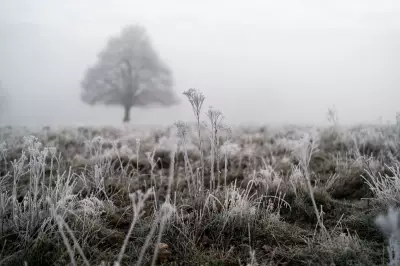
Fresh torrential downpours have unleashed chaos across Southern California, triggering urgent flash flood warnings and raising significant fears of devastating mudslides throughout Los Angeles County this Friday.
Immediate Threats and Warnings
The National Weather Service issued stark warnings for multiple districts, including downtown Los Angeles, Santa Monica, Hollywood, Beverly Hills, and Studio City. Authorities urgently cautioned residents about the high risk of sudden flash flooding in streets, creeks, and streams.
The peril was already evident before dawn on Friday, with reports of vehicles becoming trapped in rising floodwaters near Culver City. This dangerous event is driven by a powerful atmospheric river, the same weather phenomenon responsible for at least half a dozen fatalities earlier this month as it moved across California.
Previous Devastation and Wildfire Link
This intense rainfall dramatically increases the danger of mudslides, particularly in regions recently scarred by wildfires. The connection is critical: burnt land lacks vegetation to absorb water, making slopes highly unstable.
Los Angeles County experienced two catastrophic wildfires at the start of this year. The Palisades Fire on January 7 destroyed more than 6,800 buildings and claimed 12 lives. It was not fully contained until January 31. A 29-year-old suspect was arrested, accused of maliciously starting the blaze.
The Eaton Fire erupted the same day in Altadena, killing 18 people. Fanned by the fierce Santa Ana winds, both fires raged for days, reducing entire neighbourhoods to rubble and ash across a combined area of more than 40,000 acres – a land area larger than Washington D.C.
A Wider Pattern of Severe Weather
This is not an isolated incident. Just last week, a 71-year-old man died in Sutter County, north of Sacramento, after his vehicle was swept off a flooded bridge. The storm system also delivered immense rainfall as it approached Los Angeles, with more than 4 inches (10 centimetres) falling over coastal Santa Barbara County. Parts of the Sierra Nevada were blanketed with more than a foot of snow.
Atmospheric rivers, which are long, narrow bands of concentrated water vapour that form over oceans, are known for transporting massive amounts of moisture from the tropics. Their return underscores the ongoing severe weather challenges facing the state, where communities are now bracing for the compounded threats of water and earth.





